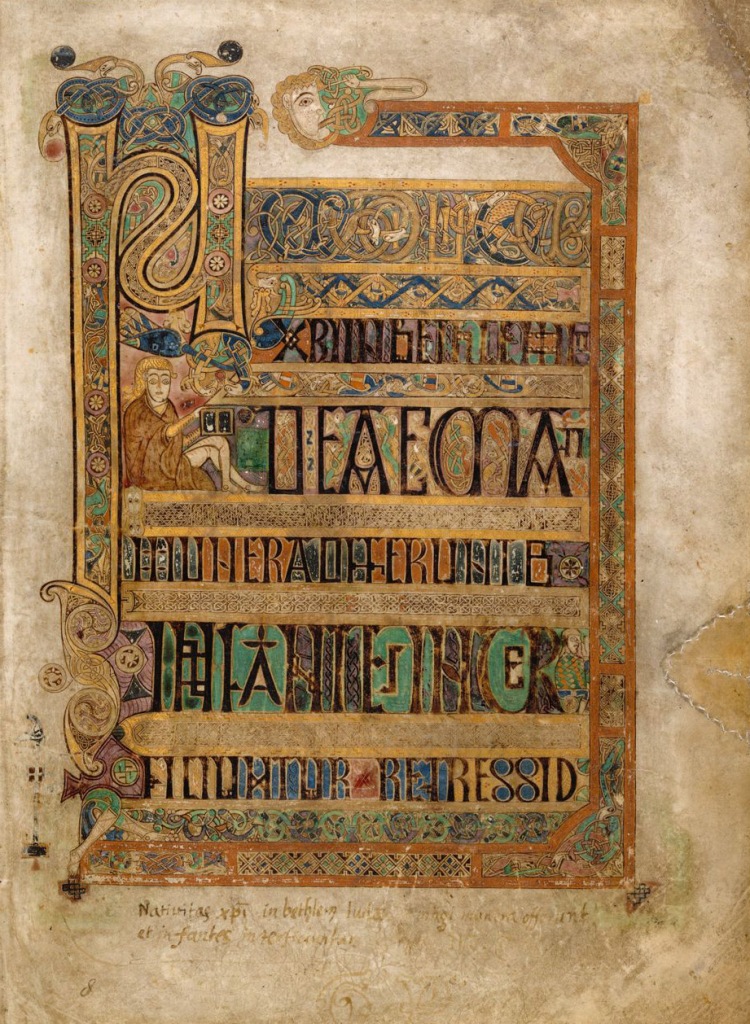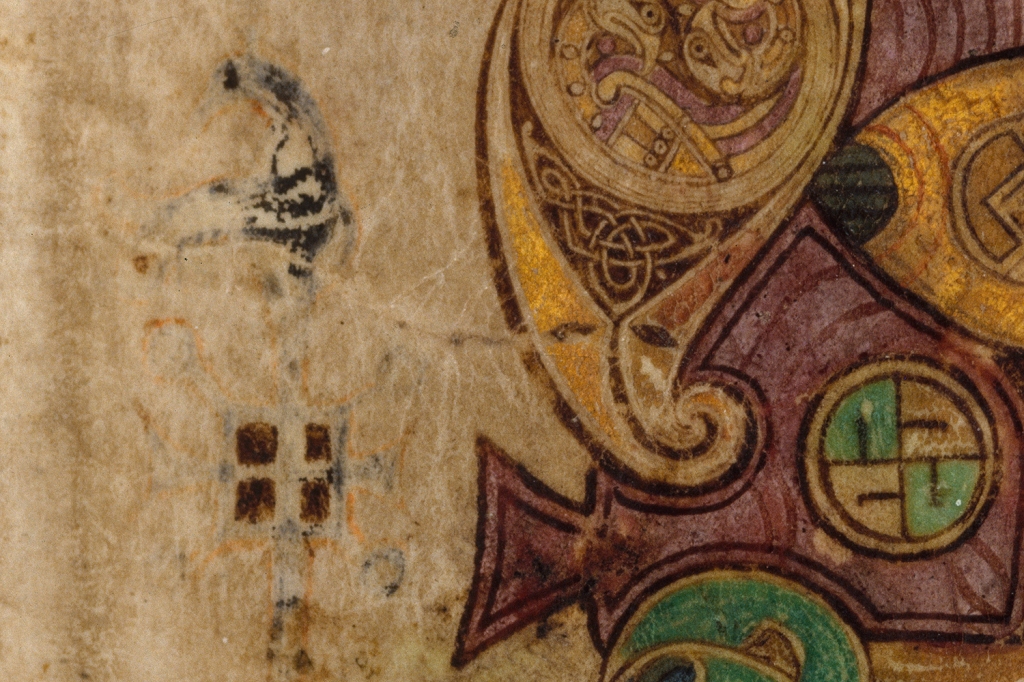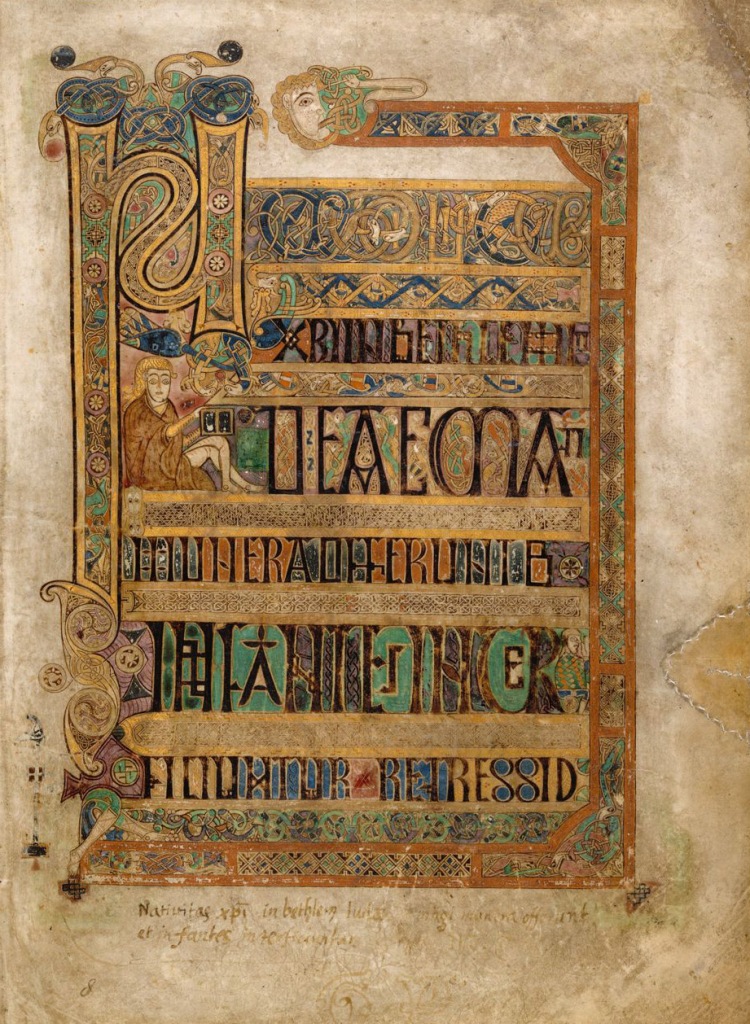In medieval manuscripts, portraits of living people served a religious function by depicting the figure (typically the owner, patron, or scribe of the book) in prayer before Christ or a saint. Portrayals of living individuals in this manner disrupted temporal and spatial boundaries, allowing the viewer to interject themselves into the vision. This liminal space allowed the audience to imagine themselves in the presence of divinity, granting them a direct and personal channel to the divine.
In the Book of Kells, several folios contain groupings of monks within their illuminations. The placement of these figures, sometimes integrated into the compositions’ borders, raises questions about their purpose and identities.

For example, in Folio 7V, The Virgin and Child, a small panel – containing six heads – physically breaks the boundary in the right-hand margin. These figures avert their gaze away from the Madonna rather than communing with the divinity. So, why would these monastic figures be facing away from the Virgin and Child? One possible explanation may come from the construction of the manuscript. Folio 7V is verso, meaning it is the left-hand page of the open book. Therefore the opposite page on the right-hand of the manuscript, folio 8R (recto), faces the gaze of the six heads. Folio 8r: Breves causae of Matthew I-III illustrates the lavishly decorated text that opens the summaries of the Gospel of Matthew.

The summary of events on this page reads as follows:
| NATIUITAS XPI IN BETHLEM IU DEAE MAGI MUNERA OFFERUNT ET INFANTES INTER FICIUNTUR REGRESSIO | THE BIRTH OF CHRIST IN BETHLEHEM OF JUDEA THE WISE MEN OFFER GIFTS AND THE CHILDREN ARE KILLED |
It is important to remember that the Book of Kells was not a private devotional book. The scholarly consensus is that the book’s intention was for use during ecclesiastical ceremonies but most likely was not read from so much as shown to the congregation. As such, the six figures in the border most likely represent the monastic audience contemplating the Word of the Gospel.
Furthermore, a new technology that enabled scholars to magnify the image at high resolution revealed the outline of a processional cross topped with a bird. The flared design at the structure’s base suggests a procession cross that could be inserted into a base to stand on the altar. This detail may represent a cross that once stood in the original monastery.

Viewing the two pages side by side, we can see that this cross stands within the line of sight of the six figures. Perhaps this serves as a reminder to focus on the ceremony celebrated at the altar.

